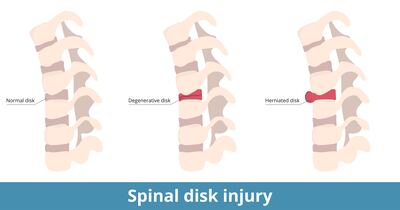“Low back pain is the leading cause of years lived with disability globally, but most interventions have only short-lasting, small to moderate effects.”
This stark opening statement from a study of a new personalised care approach for back pain published in the Lancet in April needs to be read twice to digest its content because at its core it questions the value of the standard medical model to solving chronic back pain.
Most healthcare professionals now understand that chronic pain is different to acute pain and yet medical interventions from X-rays and MRI scans to steroid injections and surgery remain the main treatment approach for many people with chronic back pain.
“We’ve known for several decades that chronic pain is different to acute pain caused by an injury. Pain that persists for more than three months is about your overall health, yet most people still think it’s better to get a scan on their back which can result in the escalation of medical interventions,” says Prof Kieran O’Sullivan, adjunct professor of physiotherapy at the School of Allied Health, University of Limerick (UL).
RM Block
Taking himself as an example, Prof O’Sullivan adds, “I’m in my mid-40s now and am fit and pain-free, but if I had an MRI on my back it would show up degenerative disc disease. The biggest review on this topic shows that 68 per cent of pain-free people in their mid-40s have disc degeneration and 88 per cent for those in their 60s have disc degeneration.”
Prof O’Sullivan acknowledges that X-rays and MRI scans, steroid injections and anti-inflammatory medications have an “important role for a small number of people” but that all the other stuff – poor sleep, not enough exercise, stress/anxiety, poor relationships or overwork – are much stronger contributors to an individual’s experience of lower back pain. Only about 10 per cent of back pain is linked to a fracture of the

spine, compression of a nerve or inflammation of the joints.
“It has been clear for decades that back pain is influenced by not only physical factors such as strength and posture but also psychological factors such as worries and mood, social factors such as work and family commitments and lifestyle factors such as sleep,” says Prof O’Sullivan.
He suggests that two main factors contribute to this outdated biomechanical approach to back pain.
The first is the belief among sufferers that if they don’t find a physical cause for their back pain they won’t be believed. “People understand that diet/stress and exercise are a legitimate part of managing high blood pressure, but if back pain is said to be caused by stress or worry they feel others will think they are faking or imagining it,” he says.
The healthcare system also remains geared towards a medical approach to solving chronic pain in spite of expert understanding of this so-called biopsychosocial model. Prof O’Sullivan explains that if you have private health insurance in Ireland it is easier and quicker to get access to MRI scans and steroid injections than it is to get more than four sessions with a physiotherapist or an appointment with a clinical psychologist or dietitian.
“And in the public system there is a huge waiting list to see a physiotherapist for back pain because they prioritise patients who have had an acute fracture or a recent stroke,” he says. Access to psychologists or dietitians for people with chronic back pain is virtually non-existent in the public healthcare system in Ireland. Prof O’Sullivan will be giving a free public online lecture – New hope for people with back pain: how personalised physiotherapy can revolutionise back pain – on Tuesday evening, May 23rd. Registration at iscp.ie
The aforementioned Lancet study compared one group of patients with persistent back pain who received the standard medical treatment for back pain over six months to those who received seven sessions over 12 weeks with a physiotherapist with a six-month follow up. The physiotherapists in the trial group were trained to deliver functional cognitive therapy, a new approach which helps people understand their pain triggers, regain confidence in how to move and make a plan to improve their general health.
“The control group had short appointments with GPs and physiotherapists with some massage or manipulation while the trial group began with a one-hour session with a physiotherapist who spent the time getting to know the person and six other shorter sessions,” says Prof O’Sullivan who is a co-author of the multi-centre trial based in Australia. The study of 500 patients found that those in the trial group experienced less pain and saved up to €3,000 per person in healthcare costs and absences from work.
Prof O’Sullivan said that in this first session the healthcare practitioner (which he says could be a nurse, a chiropractor or physiotherapist) finds out what the main contributors are to the pain. A physical examination and discussion of the site of the pain is also part of the treatment.
“It could be that someone is afraid of exercising and needs to be shown ways how to bend and move that doesn’t hurt. It could be a parent who has a child with colic and needs to get that sorted so they can sleep better. It could be someone who has gained weight from starting a new job with a long commute which means they can no longer cook healthy meals,” he explains.
The key is that each patient is treated individually and not given generic advice to exercise more, eat more healthily or manage their stress better. “We call it supported self-management and by the third session it is more like coaching and nudging the person in the right direction,” he says.
The six-month check-up offers an opportunity to see if the person has slipped back into old habits or has fears of causing themselves pain by avoiding certain movements. “A check-up at six month also gives them time to practice the new approach and deal with flare-ups of their pain in a new manner.”

Prof O’Sullivan says that while the approach is initially time consuming he believes it offers great value both for patients and the economy to transform the care of people with chronic back pain.
Another study published in the European Journal of Pain in March found that most treatments offered to teenagers with back pain also tends to ignore the big picture issues such as sleep, mood, stress and relationships, and that this more holistic way of treating back pain could be more beneficial to young people too.
“Traditional approaches such as exercise can play a useful role in helping teenagers with back pain but exercise alone is rarely enough. We have good evidence that other factors have a major impact on a person’s pain,” says Sara D Hauber, PhD student at UL and lead researcher of the review of treatments for back pain offered to teenagers.
About 200 physiotherapists in Ireland have attended training on functional cognitive therapy but if this new approach is to have greater impact other healthcare professionals would also need to undergo training and supervised practice.
Prof O’Sullivan would like to see this personalised approach to treating low back pain available in community setting through sports partnerships and other organisations. “It’s not what people expect they need for their back pain to recover. So we need to work with patient groups and communicate with the public that this new approach – where the person with pain is coached to manage their own pain in a holistic way – is effective and in line with scientific research.”






















